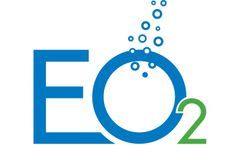Diabetic Foot Ulcers Articles & Analysis
14 articles found
Such wounds may be large and require special treatment based on the wound condition.Pressure uclers: Also known as bed sores, they usually appear when the same part of the body is compressed for a long time, such as a chair, mattress, or wheelchair seat.These types of wounds require special attention and care to prevent infection and speed bleeding.Diabetic foot: A common ...
Hundreds of millions of people suffer skin tissue damage every year, including accidental injury, surgical injury, chronic ulcer, etc., and severe cases may lead to amputation or even life-threatening. ...
Healing rate: 14.3 mm2/day. Healing time: 103 days. Wound size: 49 × 30 × 3 mm. Age of wound when treatment started: ~ 3 months. Subject: 62/male. Non-insulin dependent diabetes, venous insufficiency, peripheral neuropathy, HTN, CHF, COPD, ...
Healing rate: 25.3 mm2/day. Healing time: 33 days. Wound size: 38 × 22 × 8 mm. Age of wound when treatment started: > 1 year. Subject: 52/male. Insulin dependent diabetic, peripheral neuropathy, hypertension, renal failure on hemodialysis; history of chronic foot ...
Patient History Patient is a 40-year-old female with a history of type 2 diabetes. Patient presented to the Emergency Room with a diabetic foot ulcer and infection. ...
Patient: 65 year old Caucasian male with non-healing diabetic wound on his foot Age of Wound: Greater than 4 years Previous Therapy: 5 months of NPWT Treatment: OxyGeni® set at 3 ml/hr Days on Service: 81 days Outcome: Goals met. Wound healed. High patient satisfaction. Physician Testimony: “In my practice, I see a lot of complicated patients with a multitude of co-morbidities. I ...
Most of these amputations are performed for the treatment of non-healing diabetic foot ulcers that resulted from PAD (Peripheral Arterial Disease). These non-healing foot ulcers are caused by high blood glucose levels, which accelerate the direct damage to the nerves and blood vessels in the body, specifically ...
Individuals with chronic wounds (diabetic foot ulcers, pressure ulcers, venous ulcers, arterial ulcers, etc.) commonly have other chronic conditions – typically type 2 diabetes, hypertension, venous insufficiency, peripheral arterial disease, and/or chronic kidney disease. ...
In a pioneering “off-the-shelf ” drug treatment in place of a surgical procedure, Maruti Hospital on Tuesday inaugurated its Regenerative Medicine Department by administering stem cell therapy for a diabetic patient who lost four toes on both feet. Developed by pharma major, Cipla, in collaboration with Bengaluru-based, Stempeutics Research, over 14 years, it is ...
Highlights A retrospective analysis of real-world data published in the ‘International Wound Journal’ compared the wound closure times for diabetic foot ulcers treated with either Endoform™ Natural (1150 wounds) or collagen/ORC (1072 wounds). ...
Many practitioners think about lasers as therapy for various conditions like Fasciitis, Tendonitis, Arthritis, pain and inflammation. Diode lasers are very versatile. Swapping handpieces or adding on attachments to the handpiece allows for increased uses including wounds, ulcers, warts, dermatological conditions like Psoriasis as well as venous insufficiency and fungal ...
To date, Origin’s clinical activities have been confined to the use of its technology for topical applications, most notably chronic diabetic foot ulcers. However, in light of the increasing incidence of infectious agents resistant to antibiotics or in cases where effective therapy doesn’t exist, Origin has accelerated its plans for ...
Origin is in preliminary discussions with clinical trial sites in Hong Kong and China in relation to clinical trials of its IonojetTM technology for the treatment of diabetic foot ulcers (DFU). It is anticipated that, if the discussions proceed to fruition, the trials would form part of the dataset required to progress the technology towards a ...










